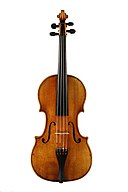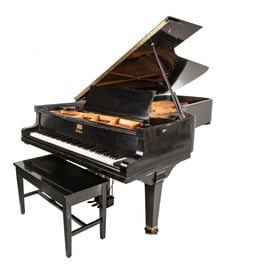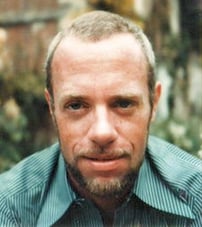The Odyssey of the Lennon - Ono - Green - Warhol Concert Grand Piano
The tale behind every Stradivarius violin is a complex odyssey significant because of the identity of the people who owned the instrument. One example is The Lady Blunt Antoni Stradivari which bears the name of Lord Byron’s daughter who purchased the violin in 1822, over a century after it was constructed. 
Like the Lady Blunt Antoni Stradivari, the Lennon-Ono-Green-Warhold Baldwin Concert Grand Model B Piano’s story is intact, compelling, and enhances its value. The piano was owned not simply by artists and musicians who were characteristic of their times, but who defined their generation. Doubtless, they have left their mark on their possessions, including this remarkable Baldwin piano.
 The tale of this legendary Baldwin piano begins with John Lennon, who was emerging from a creative hiatus in the mid-70s when he was watching the wheels turn round and round and raising his son, Sean.
The tale of this legendary Baldwin piano begins with John Lennon, who was emerging from a creative hiatus in the mid-70s when he was watching the wheels turn round and round and raising his son, Sean.
Lennon, often known as the “smart Beatle” and the iconic group’s de facto leader, made a clever purchase of a piano that was among the last of its kind produced in the United States before the 1929 stock market crash that ushered in The Great Depression.
Lennon purchased the second-hand piano in excellent condition from the Baldwin Retail Store at 58th and 7th Avenue in 1978. The same year, Lennon famously celebrated his 38th and his son Sean’s 3rd birthday at Tavern on the Green, a fixture in Manhattan until its closure due to the 2009 recession. .jpg?width=128&height=178&name=1964-Lennon-McCartney_(cropped).jpg)
Could the Baldwin Concert Grand Model B have been a birthday gift that the iconic musician and songwriter gave to himself? Or perhaps it was a gift from Yoko to John?
We know that John Lennon’s generosity extended to his friends, and he and his wife, the avant-guarde conceptual artist Yoko Ono, not only gave the piano to Pop-art impresario and friend Sam Green the following year but attached a small plaque above the resplendent Baldwin insignia, which reads: For Sam. Love from Yoko and John. 1979.
The Baldwin was one of two pianos the couple would gift to Samuel Adams Green (a scion of the Founding Father Samuel Adams, appropriate for one of the Founding Fathers of Pop Art). The piano graced Green’s Fire Island home, but it didn’t sit idly.
 The New York Times described Green as a “social sorcerer” and “a collector of people as well as art.” If so, it seems John and Yoko were a gift included with the piano. During that period, John Lennon was putting the finishing touches on what would be his enormously popular comeback album Double Fantasy which would earn Lennon a posthumous Grammy. Often during that period, John Lennon would go to Fire Island to visit his friend Sam and find creative solace with his Baldwin as a vehicle for his inspiration.
The New York Times described Green as a “social sorcerer” and “a collector of people as well as art.” If so, it seems John and Yoko were a gift included with the piano. During that period, John Lennon was putting the finishing touches on what would be his enormously popular comeback album Double Fantasy which would earn Lennon a posthumous Grammy. Often during that period, John Lennon would go to Fire Island to visit his friend Sam and find creative solace with his Baldwin as a vehicle for his inspiration.
Doubtless, the Baldwin piano evoked poignant memories of Lennon’s final creative efforts. Not long after John Lennon was fatally shot by a delusional gunman, Sam Green gave the piano a new and temporary location at the headquarters of The Interview Magazine, founded by Andy Warhol.
Green promoted many of Andy Warhol’s early works, produced his films, and often spent lost weekends with wealthy socialites and Drella (a combo of Cinderella and Dracula, the nickname for the artist coined by Warhol’s close friends).
_%E2%80%93_LOC.jpg?width=128&height=186&name=Andy_Warhol_at_the_Jewish_Museum_(by_Bernard_Gotfryd)_%E2%80%93_LOC.jpg) Between 1983 and 1987, the Baldwin piano was a main feature of “The Crystal Ball of Pop”’s offices. Walking the halls and gracing the cover of The Interview was anyone who was anyone in the 80s–many featured celebrities appear in this Sergeant Pepper’s tribute picture, including Sylvester Stallone, Rob Lowe, John Travolta, David Lee Roth, Jack Nicholson, Joan Collins and many more.
Between 1983 and 1987, the Baldwin piano was a main feature of “The Crystal Ball of Pop”’s offices. Walking the halls and gracing the cover of The Interview was anyone who was anyone in the 80s–many featured celebrities appear in this Sergeant Pepper’s tribute picture, including Sylvester Stallone, Rob Lowe, John Travolta, David Lee Roth, Jack Nicholson, Joan Collins and many more.
After the Baldwin piano spent the early to mid-1980s in The Interview offices, Green loaned it to The New York Academy of Art, co-founded by Warhol, who died in 1987. In the ensuing years, Sam Green fought a protracted legal battle to get the piano back. Details of the high-profile lawsuit were printed in The New York Post and other publications.
Just when the legal saga had reached its conclusion, another scandal followed–the piano was nowhere to be found. Karen Lile did extensive detective work and untangled the complex web of the missing Lennon-Ono-Green-Warhol piano, which was tracked down to Arab, Alabama under the ownership of Buddy Bain.
In 2003, Mansoor Emral Shaool purchased the piano from Buddy Bain. The Shaool family is prepared for the next chapter in the Odyssey of this legendary piano, this time, in the service of students in need.
Proceeds from the sale of the Lennon-Ono-Green-Warhol piano will be used to create a scholarship to Mercersburg Academy, ranked in the top 20 boarding schools in the nation for its low student-teacher ratios, strong academic standards, extracurricular activities, and outstanding alumni/ae.
.jpg?width=512&height=288&name=Mercersburg_Academy_Campus%20(1).jpg)
The Emrai Shaool Family wants to make a Mercersberg education available to promising students who might otherwise not be able to afford the tuition.
Purchasing the Lennon-Ono-Green-Warhol piano not only puts a priceless cultural artifact into your possession but will also give the cultural leaders of tomorrow a chance to discover their talents, expand their knowledge, and embrace a successful future.
Learn more about this extraordinary instrument and its history when you click here